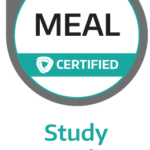STATA is a powerful statistical software package commonly used by researchers, analysts, and policymakers for data analysis and management. It provides a wide range of features and tools for handling and manipulating data, as well as performing various statistical analyses. So, wondering about What are the use of STATA software ? Here are some of the common uses of STATA:
What are the use of STATA software
- Data Management: STATA is often used for data cleaning, preparation, and organization. It can handle various types of data, including numeric, categorical, and time-series data. Users can import, export, merge, reshape, and manipulate datasets with ease.
- Descriptive Statistics: STATA can generate summary statistics, such as means, medians, standard deviations, and percentiles, to help users understand the characteristics of their data.
- Regression Analysis: It is extensively used for regression analysis, including linear regression, logistic regression, and more advanced techniques like panel data analysis and time-series regression. These analyses help to model relationships between variables and make predictions.
- Econometrics: STATA is widely used in economics and other social sciences for econometric analysis, which involves applying statistical methods to economic data. It supports various econometric techniques like instrumental variables, difference-in-differences, and propensity score matching.
- Survival Analysis: This technique is used to analyze time-to-event data, often in medical or social research. STATA can perform survival analysis using tools like Kaplan-Meier curves and Cox proportional hazards models.
- Time Series Analysis: STATA provides tools for analyzing time-series data, including autocorrelation and heteroskedasticity tests, as well as more advanced methods like ARIMA models and GARCH models for volatility analysis.
- Data Visualization: STATA enables users to create a variety of data visualizations, including histograms, scatter plots, line graphs, bar charts, and more. This helps in gaining insights from data and presenting results effectively.
- Survey Analysis: STATA offers functionalities for analyzing survey data, such as generating survey weights, calculating design effects, and conducting complex survey analyses.
- Data Exploration: Analysts can use STATA for exploratory data analysis, which involves generating plots, charts, and graphs to understand the distribution and relationships of variables.
- Data Reporting and Presentation: STATA allows users to create well-formatted reports and presentations that include analysis results, tables, graphs, and other visuals.
- Macroeconomic Analysis: In economics, STATA is used to analyze macroeconomic data, including GDP growth, inflation rates, unemployment rates, and other economic indicators.
- Academic Research: Researchers across various disciplines, including social sciences, public health, economics, and more, use STATA for conducting empirical research and publishing findings in academic journals.
Overall, STATA’s versatility and comprehensive set of statistical tools make it a popular choice for data analysis in both academic and professional settings.




















